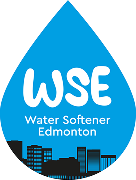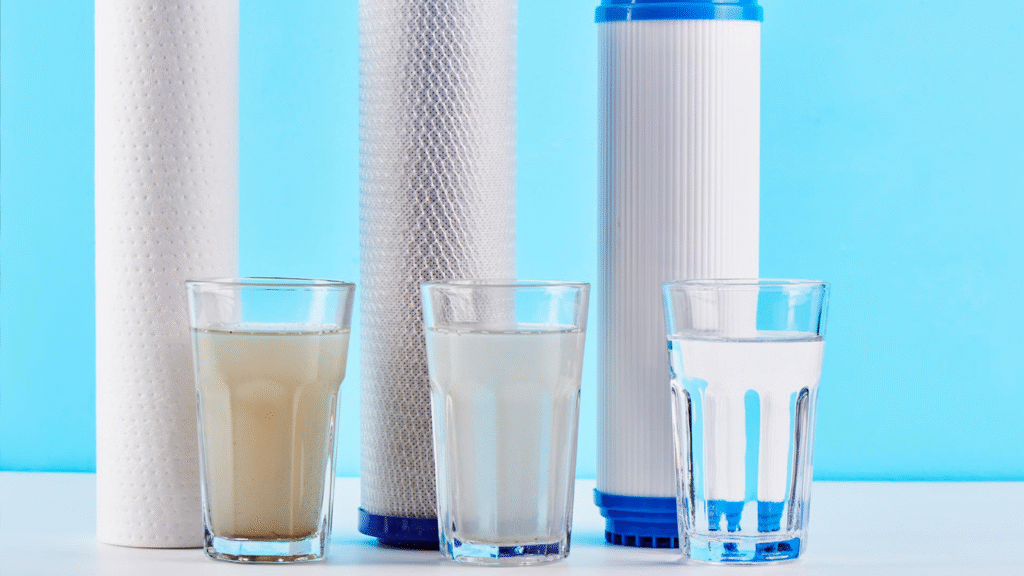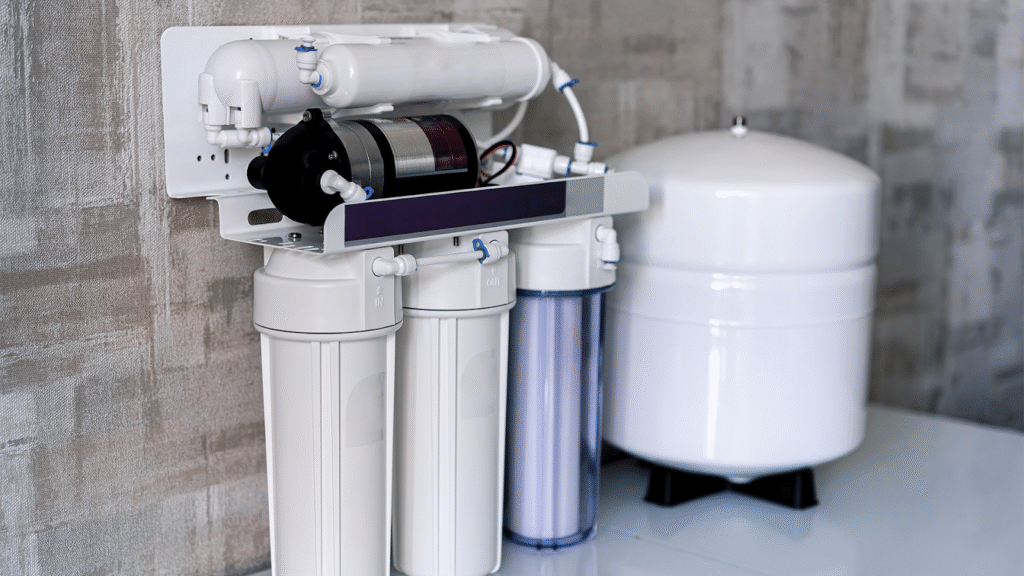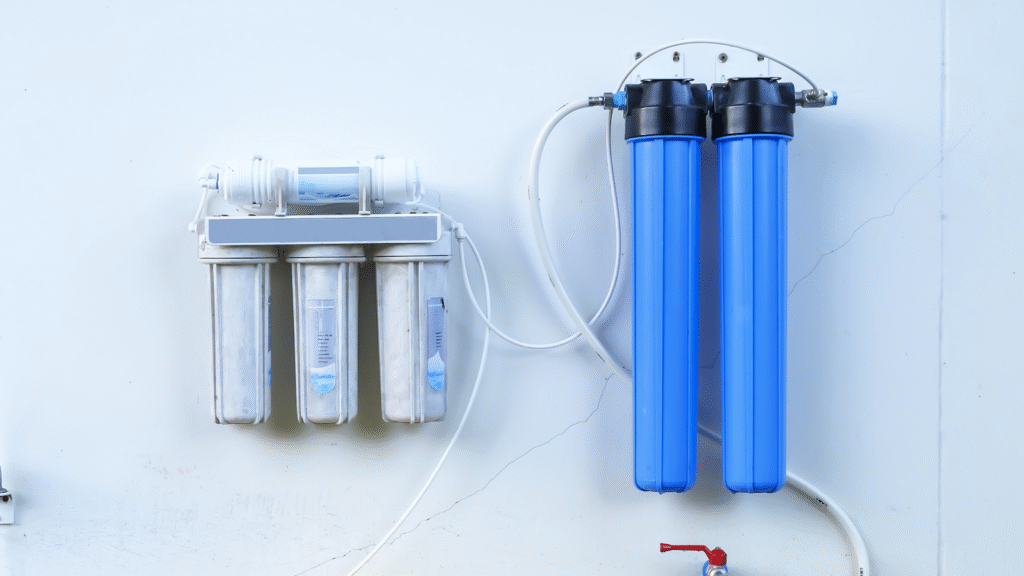If you’ve been staring at hard water stains on your fixtures or buying jug after jug of filtered water, chances are you’ve already started researching home water treatment systems. Among the most discussed solutions? Reverse osmosis (RO) and ion exchange softeners.
Both promise better water. Both are available across Edmonton. But they solve different problems in different ways.
So, which one belongs in your home?
This blog doesn’t just compare features—it guides you through real-world application, local relevance, and long-term practicality in Edmonton’s specific water conditions.
Table of Contents
ToggleReverse Osmosis vs. Ion Exchange: What They Do Best
This breakdown reveals the biggest misconception: RO and ion exchange are not interchangeable. Instead, they’re complementary. But let’s explore deeper.
| Feature | Reverse Osmosis (RO) | Ion Exchange Softener |
| Primary Purpose | Purifies drinking water | Softens water throughout home |
| Removes Hardness Minerals | No | Yes |
| Removes Contaminants | Yes (incl. lead, chlorine) | No |
| Improves Taste/Odor | Yes | No |
| Affects Soap Lather & Skin | No | Yes |
| Installation Scope | Usually under-sink | Whole-home integration |
Reverse Osmosis: The Purist’s Choice
RO systems force water through a semi-permeable membrane, removing up to 99% of dissolved solids, including:
- Lead, arsenic, fluoride
- Chlorine, nitrates, pesticides
- Sediments, microplastics
Most Edmonton homes use RO at the point of use (POU) – typically under a kitchen sink – with a separate faucet.
Pros:
- Excellent for drinking, cooking
- Improves taste, smell, and clarity
- Removes health-risk contaminants
Cons:
- Wastewater produced during filtration (3:1 ratio)
- Slower flow rate
- Only treats a small portion of the home water
RO is not effective against calcium or magnesium – Edmonton’s primary hard water minerals.
Ion Exchange: The Whole-Home Workhorse
Ion exchange systems soften water by swapping calcium and magnesium ions with sodium or potassium. This process addresses:
- Limescale in pipes
- Appliance wear and tear
- Poor soap lathering
- Skin and hair irritation
Ion exchange units are installed at the point where water enters your home, ensuring every drop – shower, laundry, dishes – is softened.
Pros:
- Ideal for Edmonton’s 165 mg/L water hardness
- Protects plumbing and heating systems
- Reduces detergent/soap use
Cons:
- Doesn’t purify or improve taste
- Requires salt refills and periodic maintenance
- Adds small amounts of sodium to water
To learn more about how ion exchange compares to other softening methods, check out our Salt-Based vs. Salt-Free Water Softeners guide.
Where They Fit Best: Functional Roles in Your Home
Instead of pitting them against each other, Edmonton homeowners often use both systems to handle different aspects:
Use RO for:
- Drinking water
- Cooking and coffee
- Baby formula and medical needs
Use Ion Exchange for:
- Bathing and showers
- Washing clothes and dishes
- Extending life of water heaters and fixtures
Local Conditions Matter: Edmonton’s Water Profile
Here’s why this combo is so popular here:
- Hardness: 165 mg/L of CaCO₃
- Chlorine: Present in moderate amounts
- Fluoride: Added by EPCOR for dental health
RO handles the contaminants EPCOR leaves behind. Ion exchange protects your home from long-term hard water damage.
Energy & Efficiency Insights
| Consideration | Reverse Osmosis | Ion Exchange |
| Electricity Use | Low to none (gravity flow) | Moderate (valves, timers) |
| Wastewater | Yes (3—1 ratio) | Yes (brine regeneration) |
| Filter Changes | 6–12 months | Resin every 7–10 years |
| Salt Requirement | None | Yes (monthly bags) |
Homeowner Feedback in Edmonton
Common RO praises:
- “Water tastes like bottled water.”
- “No chlorine smell in tea or coffee.”
Common ion exchange praises:
- “Our shower heads don’t clog anymore.”
- “No more limescale on faucets or glassware.”
When used together, homeowners report improved quality of life, fewer plumbing issues, and lower soap/detergent costs.
When to Choose One Over the Other
| Goal | Recommended System |
| Health-focused purification | Reverse Osmosis |
| Whole-home scale prevention | Ion Exchange |
| Skin/hair improvement | Ion Exchange |
| Better coffee & taste | Reverse Osmosis |
| Both | Use in combination |
Conclusion:
It’s not about choosing between RO and ion exchange—it’s about understanding what each system brings. If your goal is pure drinking and soft water throughout your home, the smartest solution is to use both.
In a city like Edmonton, where hard water and chemical treatment intersect, pairing systems gives you a full-spectrum defense.
Need help deciding? Contact Water Softener Edmonton for a free home water evaluation and custom treatment recommendations.
For a broader understanding of all water softener options, visit our Comprehensive Guide to Water Softener Technologies in Edmonton.



